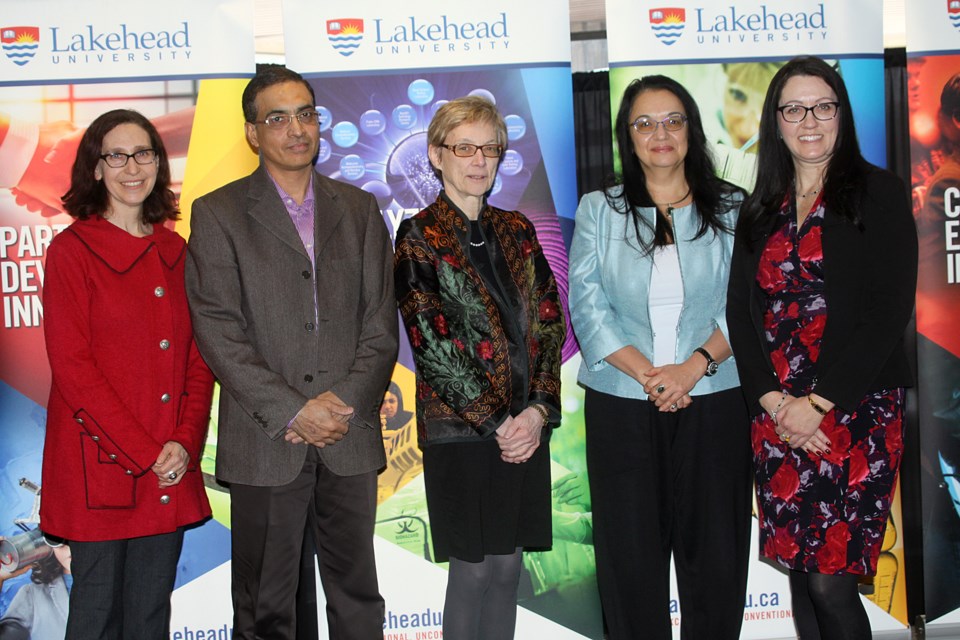THUNDER BAY – Seven Lakehead University students are going to spend the next two years on the cutting edge working to develop enhanced medical imaging technology.
The university on Wednesday announced a $400,000 grant for the two-year project from Mitacs, a national non-profit research and training organization.
Harutyun Poladyan, a biotechnology doctoral student at Lakehead, said it’s an exciting project.
“This is going to have a huge impact on early breast cancer detection and diagnosis of breast cancer for women at higher risk,” he said. “Technology advancements in this project are going to have a huge impact.”
The project, which includes internships with the Thunder Bay Regional Health Research Institute, will involve seven Lakehead PhD students in chemistry and materials science as well as biotechnology, along with one intern from Ryerson University’s biomedical physics PhD program.
Alla Reznik, a Lakehead University physics professor and the Canada Research Chair in physics of molecular imaging who is leading the project, said medical imaging such as MRIs, PET scans and x-rays plays an increasingly important role as technology advances.
“In order to detect diseases we need to see. We can’t detect and diagnose diseases without seeing,” Reznik said.
“This is especially true for cancer research because you need to see small tumours and the smaller the tumour you are able to see the better the prognosis is for the particular patients and better health outcomes. Improvements in medical imaging technologies have high impact on clinical outcomes.”
Reznik said the students will be working with physicians and radiologists, which will provide them with more than just a classroom experience.
“This will expose students to clinical problems, which is of paramount importance for them to understand what is needed in medical imaging to improve clinical practice,” Reznik said.
Poladyan is looking forward to applying his studies in a way that can make a difference for patients.
“If you show a student something they’re going to forget it. If you let them do it they’re going to learn it and be good at it,” Poladyan said. “I think this project is hands on training that brings the opportunity to build something with your own hands, test it and see how it is performing.”
